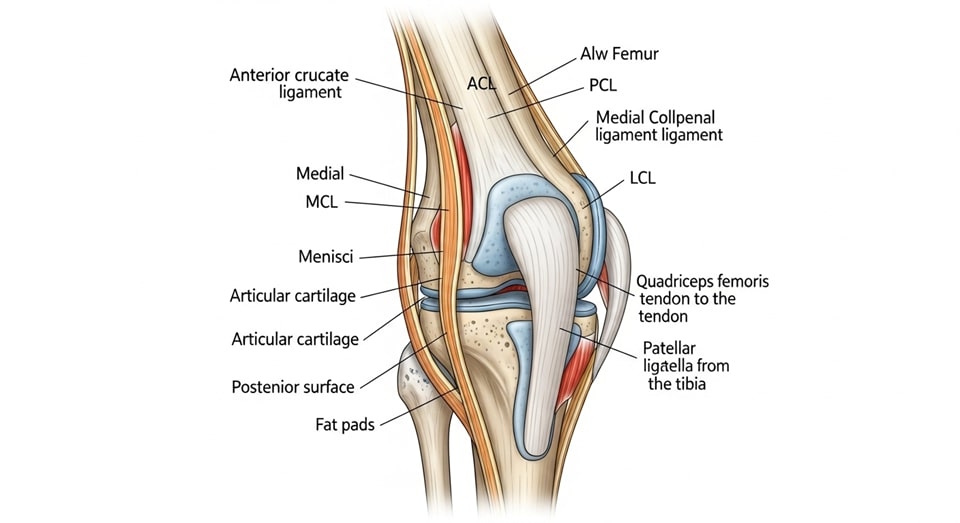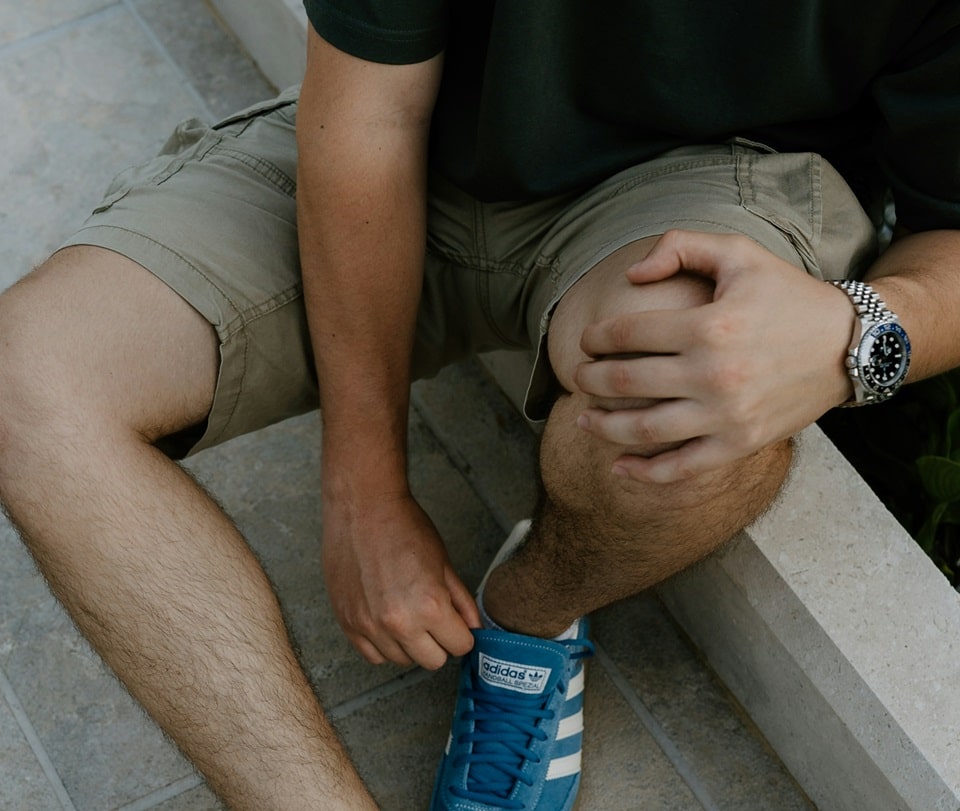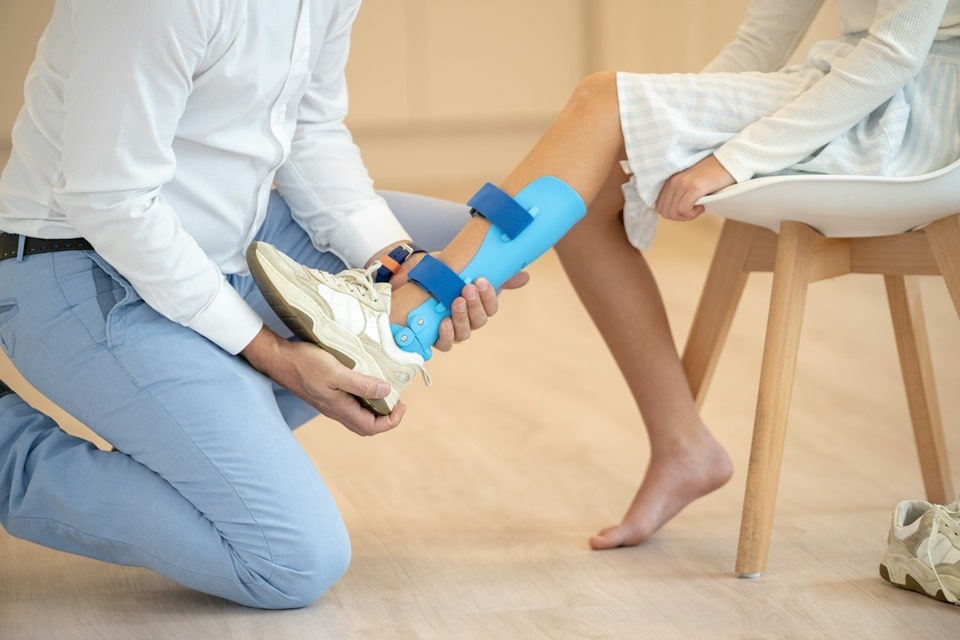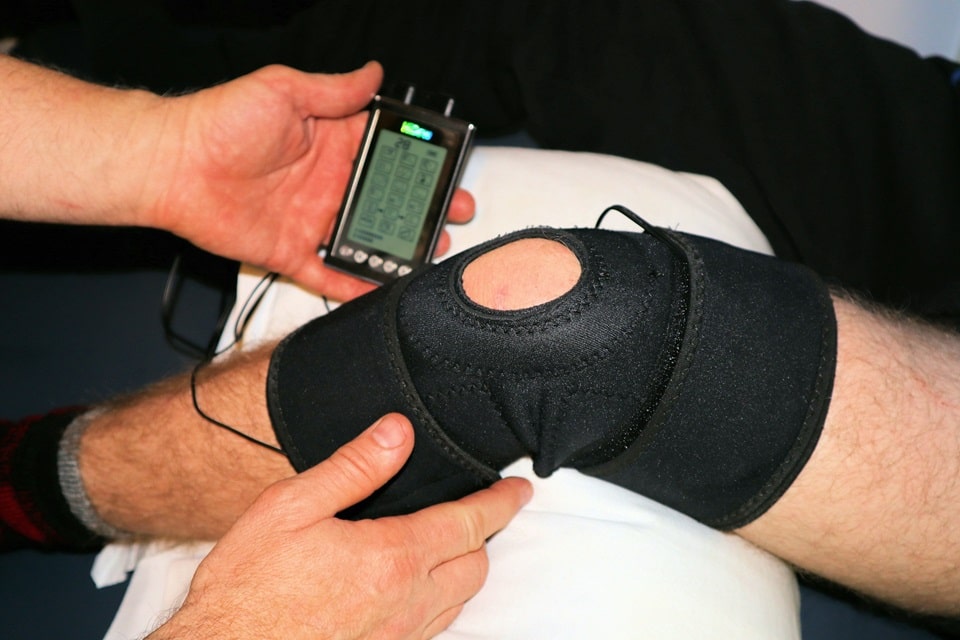
A Comprehensive Guide to Understanding and Managing Knee Pain
Knee pain is a pervasive and often debilitating condition that can affect people of all ages, from competitive athletes to older adults leading a sedentary lifestyle. This common complaint is a result of the knee’s intricate and multifaceted role as the largest and one of the most complex joints in the human body. The knee bears the full weight of the body and is subjected to immense stress during everyday activities like walking, running, and jumping. It is therefore highly susceptible to both acute injuries and chronic degenerative conditions. The pain can manifest in a variety of ways, ranging from a mild ache to a sharp, stabbing sensation that makes it impossible to move. Understanding the underlying causes and symptoms is the crucial first step toward effective management and a return to a pain-free life. This comprehensive guide will delve into the anatomy of the knee, explore the common causes and symptoms, and provide a detailed overview of diagnostic, treatment, and preventive measures. It is an essential resource for anyone seeking to better understand their knee pain.
The knee joint, or tibiofemoral joint, is a marvel of biological engineering, a masterpiece of complex structures working in perfect harmony to provide both mobility and stability. It is a synovial hinge joint that primarily allows for flexion and extension, similar to a door hinge, but also permits a small degree of rotation. The joint is a crucial link in the lower limb kinetic chain, connecting the powerful muscles of the thigh to the lower leg. The knee’s remarkable ability to absorb shock and withstand immense pressure is due to a combination of strong ligaments, durable cartilage, and powerful muscles. It is a critical component of human locomotion, and its health is fundamental to a person’s ability to live an active and independent life. When any of these components are compromised, whether through injury or disease, the result is often the onset of pain and a significant reduction in a person’s quality of life. The knee is a truly remarkable joint that deserves a great deal of attention and care.
Knee pain can severely impact an individual’s quality of life, transforming simple tasks like climbing stairs or even getting out of a chair into a painful ordeal. The persistent discomfort can lead to a sedentary lifestyle, which in turn can exacerbate the problem by causing muscle weakness and weight gain. The psychological toll of chronic pain can be just as significant, leading to frustration, depression, and a loss of independence. For athletes, a knee injury can mean the end of a season or even a career, highlighting the profound importance of knee health in the world of sports. However, a significant portion of knee pain can be managed and even prevented with the right knowledge and proactive care. By understanding the risk factors and making small changes to one’s daily routine, it is possible to reduce the stress on the knee joint and maintain long-term health. The information in this article is designed to empower you with the knowledge you need to take control of your knee health and live a more active and fulfilling life.
The Intricate Anatomy of the Knee Joint
The foundation of the knee joint consists of a complex arrangement of bones. The femur, or thigh bone, is the largest bone in the body and forms the top part of the joint. Its two rounded ends, known as femoral condyles, articulate with the top surface of the tibia, or shin bone. The patella, a small, triangular bone commonly known as the kneecap, sits in front of the joint, protecting it and acting as a lever for the quadriceps muscle. The fibula, a smaller bone that runs parallel to the tibia, does not bear much weight but provides a crucial attachment point for ligaments and muscles. This bony framework, while robust, is vulnerable to fractures from direct trauma or a sudden fall. The smooth articulation between these bones is essential for fluid movement, and any misalignment or damage can lead to pain and reduced mobility. Understanding these bones is the first step toward understanding the knee.
Protecting the ends of the bones and providing a smooth, low-friction surface for movement is articular cartilage. This tough, elastic tissue acts as a natural shock absorber and allows the femur and tibia to glide effortlessly over each other. The menisci, two C-shaped pads of fibrocartilage located between the femoral and tibial bones, play an even more critical role as shock absorbers and stabilizers. The medial meniscus is on the inner side of the knee, while the lateral meniscus is on the outer side. These menisci help to distribute weight evenly across the joint and contribute to its stability, particularly during rotational movements. Damage to the menisci, often caused by a twisting motion, can lead to a torn cartilage, which is a common and painful sports injury. The health of both the articular cartilage and the menisci is paramount to the long-term health of the knee joint. They are a critical part of the knee’s shock absorption system.
The stability of the knee is primarily dependent on four major ligaments that connect the femur and tibia. The anterior cruciate ligament (ACL) and the posterior cruciate ligament (PCL) are located inside the joint and form a cross, hence the name “cruciate.” The ACL prevents the tibia from sliding forward on the femur, while the PCL prevents it from sliding backward. On the sides of the knee, the medial collateral ligament (MCL) and the lateral collateral ligament (LCL) provide stability against sideways forces. The MCL prevents the knee from bending inward, and the LCL prevents it from bending outward. Tears or sprains of these ligaments are common injuries in sports and can cause severe instability in the joint. The health of these ligaments is crucial for a person’s ability to perform high-impact activities. Without them, the knee joint would be completely unstable and unable to bear any weight. They are the true workhorses of the knee.
Beyond the bones and ligaments, a network of soft tissues is essential for the knee’s function. Tendons, which are strong cords of tissue, connect muscles to bones. The quadriceps tendon connects the powerful quadriceps muscles on the front of the thigh to the kneecap, while the patellar tendon connects the kneecap to the tibia. These tendons are responsible for straightening the leg and are crucial for activities like walking and running. Tendonitis, or inflammation of these tendons, is a common overuse injury. Bursae are small, fluid-filled sacs that are located around the knee joint. Their purpose is to reduce friction between bones, tendons, and muscles. When bursae become inflamed, a condition known as bursitis, it can cause pain and swelling. Finally, the powerful quadriceps and hamstring muscles are the main drivers of knee movement, providing both strength and stability. The health and strength of these muscles are a key part of knee health.
Recognizing the Symptoms of Knee Pain
Knee pain can present in a variety of ways, and understanding the specific symptoms is crucial for identifying the underlying cause. The pain itself can range from a dull ache to a sharp, stabbing sensation. It may be localized to a specific area, such as the front of the knee (common with kneecap issues) or the back of the knee (often associated with Baker’s cysts or hamstring problems). Alternatively, the pain can be diffuse, spreading throughout the entire joint. The nature of the pain can also provide clues. Pain that worsens with activity and improves with rest is often a sign of mechanical or overuse issues, while constant pain may indicate a more serious condition like arthritis or an infection. Paying close attention to the characteristics of your pain is the first step toward a correct diagnosis. This is an important part of the diagnostic process.
Swelling and stiffness are two of the most common signs of inflammation or fluid accumulation within the knee joint. Swelling can occur immediately after an injury, such as a ligament tear, or it can develop gradually over time, as is common with arthritis. The swelling can make the knee feel tight and full, and it can significantly reduce your range of motion. Stiffness, or a feeling of reduced flexibility, is often worse in the morning or after prolonged periods of rest. This is a common symptom of arthritis, and it can make it difficult to straighten or bend your knee fully. The presence of swelling and stiffness is a clear sign that something is wrong with the joint, and it is a major reason why you should seek medical attention. They are a clear indication of a problem.
A feeling of instability, or a sensation that the knee is “giving way,” is a hallmark symptom of a ligament injury, particularly a torn ACL. This instability can make it difficult to trust your knee, and it can lead to a fear of falling or a general sense of insecurity. Popping or crunching noises, known as crepitus, are also a common symptom of knee pain. These noises can be a sign of a number of issues, including a torn meniscus, a loose body in the joint, or the wearing down of cartilage. While a popping sound on its own is not always a sign of a serious problem, it should not be ignored, especially if it is accompanied by pain or swelling. It is a clear sign of a problem, and it is a major reason why you should seek medical attention. The combination of instability and popping can be a major warning sign.
Other symptoms of knee pain include redness and warmth, which are signs of inflammation or a possible infection. If the knee is red, swollen, and warm to the touch, and you are also experiencing a fever, you should seek immediate medical attention, as this could be a sign of a serious joint infection. Difficulty walking, limping, or an altered gait is a clear sign that the knee is unable to support your weight. This can be caused by a variety of issues, including a fracture, a torn meniscus, or a severe case of arthritis. The sensation of the knee “locking” or “catching” is another common symptom that can be a sign of a torn meniscus or a loose body in the joint. This is a very serious symptom that can make it impossible to move your knee and can be a sign of a more serious problem.
Common Causes of Knee Pain
Knee pain can be caused by a wide range of factors, from sudden injuries to chronic conditions that develop over time. Injuries are a very common cause of knee pain, especially in athletes and individuals who are physically active. Ligament injuries, such as a torn ACL, are often the result of a sudden change in direction or a direct blow to the knee. Meniscus tears are also very common and are often caused by a twisting motion or a sudden impact. Tendon injuries, such as patellar tendinitis, are often the result of overuse or repetitive motions, such as running or jumping. Fractures of the bones in the knee are often the result of a direct trauma, such as a fall or a car accident. These injuries are a major reason why so many people experience knee pain. For more detailed information on ligament injuries, a useful OrthoInfo article can be found here.
Mechanical problems are another common cause of knee pain. Patellofemoral pain syndrome, also known as “runner’s knee,” is a common condition that causes pain between the kneecap and the femur. It is often the result of overuse, muscle imbalances, or poor alignment of the kneecap. Iliotibial band syndrome is another common mechanical issue that causes pain on the outside of the knee. It is often the result of inflammation of the iliotibial band, a thick band of tissue that runs from the hip to the shin. Loose bodies, which are fragments of bone or cartilage that float in the joint space, can also cause pain and a catching sensation. These mechanical issues are a major reason why so many people experience knee pain, and they can be a major source of frustration for a wide range of people.
Arthritis is a chronic condition that is a major cause of knee pain, particularly in older adults. Osteoarthritis, or “wear-and-tear” arthritis, is the most common form of arthritis and is characterized by the breakdown of cartilage in the knee. The breakdown of cartilage can lead to pain, swelling, and stiffness, and it can significantly reduce a person’s quality of life. Rheumatoid arthritis is an autoimmune condition that causes inflammation of the joints, which can lead to joint damage and pain. Gout is a type of arthritis that is caused by the buildup of uric acid crystals in the joint, which can lead to sudden and severe pain. Pseudogout is similar to gout but is caused by calcium pyrophosphate crystals. These chronic conditions are a major reason why so many people experience knee pain.
Other conditions can also cause knee pain. Infections, such as septic arthritis, can cause severe pain, swelling, and redness in the joint. Lyme disease can also cause knee pain, and it is a very serious condition that can lead to long-term health problems. Bursitis, or inflammation of the bursae, is a common condition that is often caused by overuse or injury. Osgood-Schlatter disease is a condition that affects adolescents and causes inflammation of the patellar tendon, typically due to growth spurts and physical activity. Plica syndrome is another condition that is caused by the irritation of the synovial tissue in the knee. Finally, tumors, both benign and malignant, can also cause pain in or around the knee joint. These conditions are less common, but they should not be ignored.
Diagnosis and Treatment of Knee Pain
Accurate diagnosis is the most crucial step in the treatment of knee pain. A healthcare provider will typically begin with a detailed medical history, asking about the nature of the pain, its location, and any activities that make it worse. They will also ask about any previous injuries, medical conditions, or medications that you are taking. This information is essential for identifying the underlying cause of your pain. A physical examination will then be performed, during which the doctor will assess the swelling, tenderness, range of motion, and stability of your knee. They will also perform a number of tests to check for ligament injuries, meniscus tears, or other mechanical issues. The physical examination is a very important part of the diagnostic process, and it can provide a lot of information about the underlying cause of your pain.
In many cases, a doctor will order imaging tests to get a better look at the structures inside your knee. X-rays are a common first step, as they can reveal bone fractures, arthritis, or any signs of a misalignment. They are a very useful tool for diagnosing a number of conditions. An MRI, or magnetic resonance imaging, is a more advanced imaging test that can provide detailed images of the soft tissues in your knee, including ligaments, tendons, and cartilage. An MRI is a very useful tool for diagnosing a torn meniscus or a ligament injury. A CT scan is another advanced imaging test that can provide detailed images of the bone structures in your knee. It is a very useful tool for diagnosing fractures or other bone-related issues. Ultrasound is a simple imaging test that can be used to assess soft tissues and fluid accumulation in the knee. These imaging tests are a key part of the diagnostic process.
Laboratory tests, such as blood tests or joint fluid analysis, may also be ordered to check for infection, gout, or rheumatoid arthritis. These tests can provide a lot of information about the underlying cause of your pain, and they can be a very useful tool for a correct diagnosis. The treatment for knee pain depends on the underlying cause and severity. In many cases, a doctor will recommend conservative treatments, such as rest, ice, compression, and elevation (R.I.C.E.). This simple treatment can be very effective for a variety of knee injuries. Physical therapy is also a very important part of the treatment process, as it can help to strengthen the muscles around the knee and improve your range of motion. Pain relief medications, such as over-the-counter ibuprofen or acetaminophen, can also be used to manage pain and inflammation. The goal of conservative treatment is to reduce pain and inflammation and to restore the knee to its normal function. For a comprehensive look at the role of physical therapy, a useful WebMD guide can be found here.
In some cases, medical interventions may be necessary. Corticosteroid injections, for example, can be used to reduce inflammation and pain, while hyaluronic acid injections can be used to lubricate the joint and improve the symptoms of osteoarthritis. In more severe cases, surgical options may be necessary. Arthroscopy is a minimally invasive surgery that can be used to repair a torn meniscus, remove loose bodies, or trim damaged cartilage. A partial or total knee replacement may be necessary for severe cases of arthritis. The type of surgery that is right for you will depend on the underlying cause of your pain and your overall health. The goal of surgery is to restore the knee to its normal function and to eliminate pain. The decision to have surgery is a very personal one.
| Diagnostic Tool | What It Shows | When It’s Used | Key Information Gained |
|---|---|---|---|
| X-ray | Bone structures, fractures, and joint alignment. | To check for broken bones, dislocations, or advanced arthritis. | Identifies bone-related issues and the presence of osteoarthritis. |
| MRI | Soft tissues, including ligaments, tendons, and menisci. | To diagnose ligament tears, meniscus injuries, or cartilage damage. | Provides a clear picture of the internal soft tissue structures for precise diagnosis. |
| CT Scan | Detailed, cross-sectional images of bones. | For complex fractures or assessing bone quality before surgery. | Offers a highly detailed view of the bony anatomy of the joint. |
| Ultrasound | Fluid buildup, tendon inflammation, and some soft tissue injuries. | To assess conditions like bursitis or tendinitis in real-time. | A quick and non-invasive way to evaluate fluid and inflammation. |
Proactive Prevention of Knee Pain
- Maintain a Healthy Weight: Excess body weight places an enormous amount of stress on your knees. Every pound you lose can reduce the pressure on your knees by several pounds, which can make a significant difference in a person’s long-term joint health. Maintaining a healthy weight is one of the most effective ways to prevent knee pain and arthritis, and it is a major step you can take to protect your knees from long-term damage. It is a key part of knee health and is an important part of a healthy lifestyle.
- Strengthen Key Muscles: Strong muscles around the knee, such as the quadriceps, hamstrings, and calves, act as natural shock absorbers and provide crucial support for the joint. Strengthening these muscles can help to stabilize the knee and reduce the risk of injury. It is a very important part of a person’s long-term knee health, and it is a major step you can take to protect your knees from damage. It is a key part of a healthy lifestyle and is an important part of a healthy lifestyle.
- Practice Proper Technique: Whether you are lifting weights, running, or playing sports, using the correct form and technique can help to prevent knee injuries. Poor form can place undue stress on your knees, leading to pain and long-term damage. It is important to work with a coach or a physical therapist to ensure that you are using the correct form and technique. It is a key part of injury prevention.
- Wear Appropriate Footwear: The right shoes can make a big difference in the health of your knees. Choose shoes that provide adequate support and cushioning, and avoid wearing high heels or worn-out shoes, as they can place additional stress on your knees. It is a very important part of a person’s long-term knee health, and it is a major step you can take to protect your knees from damage. It is a key part of injury prevention.
- Warm Up and Stretch: Before exercising, it is crucial to warm up your muscles and stretch your joints. A proper warm-up can help to prepare your muscles for physical activity and can reduce the risk of injury. Stretching can help to improve your flexibility and range of motion, which is very important for knee health. It is a key part of injury prevention.
- Avoid Overuse: Repetitive motions and overexertion can lead to overuse injuries, such as tendinitis or bursitis. It is important to listen to your body and to take breaks during prolonged activities. It is a very important part of a person’s long-term knee health, and it is a major step you can take to protect your knees from damage. It is a key part of a healthy lifestyle and is an important part of a healthy lifestyle.
- Stay Active: Regular, low-impact exercises, such as swimming, cycling, or walking, can help to improve joint health and to strengthen the muscles around the knee. These exercises can help to keep your knees healthy and to reduce the risk of long-term damage. It is a key part of a healthy lifestyle and is an important part of a healthy lifestyle. For more information, a useful Healthline guide can be found here.
When to Seek Medical Attention for Your Knee Pain
While many cases of knee pain can be managed with at-home care and rest, there are certain situations where you should seek immediate medical attention. If your pain is severe, persistent, or accompanied by significant swelling, redness, or warmth, you should consult a healthcare professional. These symptoms can be a sign of a more serious condition, such as an infection or a severe injury, that requires a correct diagnosis and treatment. You should also seek medical attention if your knee is causing instability or is unable to bear weight, as this could be a sign of a torn ligament or a fracture. The presence of a popping sound or a locking sensation in your knee is another sign that you should seek medical attention, as it could be a sign of a torn meniscus or a loose body in the joint. Do not wait for your knee to get better on its own.
If you have tried at-home care and rest and your knee pain is not improving, you should also consider consulting a healthcare professional. A doctor can provide a correct diagnosis and a treatment plan that is tailored to your specific needs. They can also recommend a physical therapist or an orthopedist who can help you to manage your pain and to strengthen your knee. The goal of medical care is to alleviate pain, restore function, and maintain the long-term health of your knee. By taking care of your knees, you can continue to enjoy an active and pain-free lifestyle. The information in this article is designed to empower you with the knowledge you need to take control of your knee health and to live a more active and fulfilling life. It is an essential resource for anyone seeking to better understand their knee pain.















